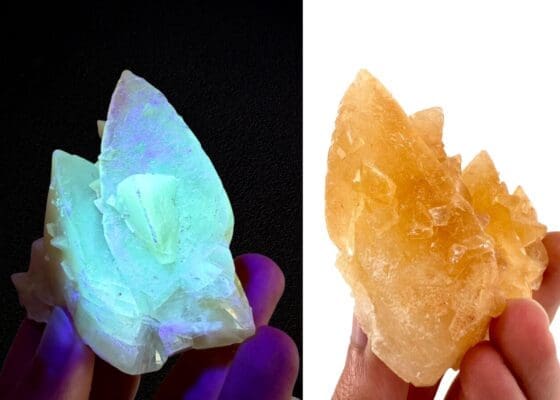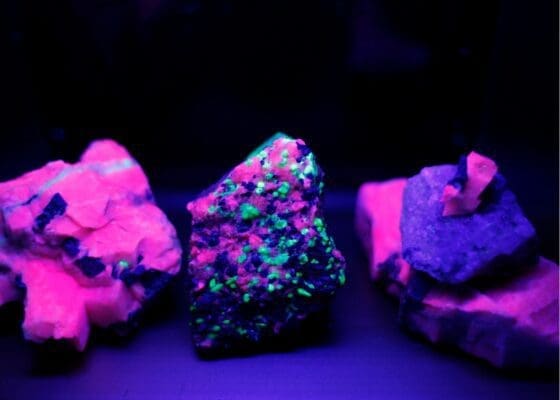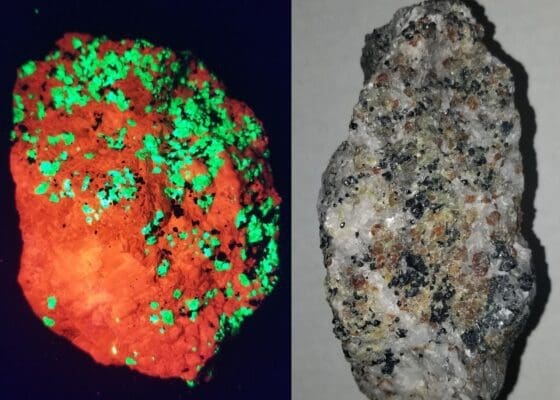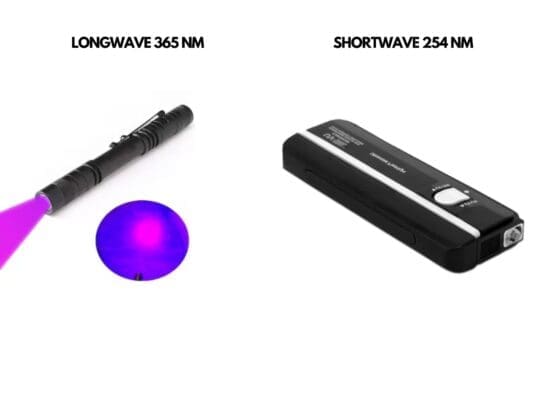In the realm of geology, few phenomena are as mesmerizing as the glow of fluorescent minerals. Their ethereal light has piqued the curiosity of scientists, collectors, and nature enthusiasts alike. But what orchestrates this magnificent dance of light? In this comprehensive guide, we’ll explore the profound science of fluorescence, offering insights into the physical and chemical processes that instigate this glow and its varied applications in our everyday lives.
Physical and Chemical Processes Behind the Glow:

Absorption:
The phenomenon of the enigmatic glow exhibited by fluorescent minerals finds its genesis in the process of absorption. This stage is akin to a silent, invisible symphony where ultraviolet light (UV) or x-rays play an integral role, illuminating the inherent capabilities of these minerals.
Every fluorescent mineral harbors specific elements, each boasting unique atomic structures meticulously crafted by nature. These atomic structures are not mere physical forms but are intricate assemblies that define the minerals’ abilities to interact with light and energy. These structures are sensitive to certain wavelengths of light and energy, a specificity rooted in the unique configuration of atoms and molecules.
When ultraviolet light or x-rays grace the surface of these minerals, a complex yet harmonious interaction unfolds. The energy contained in these light sources infiltrates the atomic structures of the minerals, a process facilitated by the minerals’ inherent receptivity to specific wavelengths. Each mineral, depending on its atomic structure, selectively absorbs particular wavelengths, instigating the inaugural phase of the fluorescence process.
Example: Calcite Absorbing UV Light
Calcite is a common mineral that can fluoresce under UV light due to the presence of certain impurities like manganese or lead. When a piece of calcite is exposed to UV light, it absorbs the light at a specific wavelength depending on the type and concentration of the impurities present.
Scenario: Imagine a geologist using a UV lamp in a dark room, illuminating a calcite sample embedded with manganese. The calcite absorbs the UV light, initiating the process of fluorescence.
Excitation:
As the absorbed energy percolates through the mineral, a remarkable transformation occurs at the atomic level – a process termed ‘excitation’. The electrons, otherwise in a state of rest or equilibrium, find themselves invigorated, propelled to higher energy states.
Yet, in these elevated states, the electrons encounter instability. They are akin to wanderers treading unfamiliar terrains, energized yet unstable, dynamic yet precarious. The electrons are now in an ephemeral phase, brimming with energy, yet yearning for the stability and equilibrium of their original states.
The energy absorbed from the UV or x-ray sources instills a transient vibrancy in the electrons, turning them into carriers of this excess energy. They teeter at the precipice of these heightened states, holding within them the latent potential to release energy, marking the prelude to the emission phase.
Example: Electrons in Calcite Reaching Excited State
As the calcite absorbs the UV light, the energy from the light elevates the electrons to a higher energy state. The manganese atoms, acting as activators, play a critical role in this excitation process.
Scenario: The geologist observes that upon illumination with the UV lamp, the calcite sample begins to change. It’s not glowing yet, but there’s a noticeable energy absorption as the electrons within the manganese-activated calcite are energized, moving to a higher, excited state.
Emission:
The crescendo of this atomic ballet unfolds in the emission stage, a visual spectacle where energy transforms into a visible, mesmerizing glow. As the excited electrons make the inevitable descent to their ground states, the excess energy harbored within them seeks release. It finds expression in the form of photons of light, each photon a parcel of the entrapped energy seeking liberation.
This cascade of photons paints a visual symphony of vibrant hues, each note a color, each color a testament to the energy transition that occurs during the descent. The spectrum of colors exhibited is not arbitrary but is intricately tied to the ‘energy gap’ between the excited and ground states of the electrons.
Every fluorescent mineral, with its unique atomic structure, exhibits a characteristic glow, a signature defined by the specific wavelengths of emitted light. This glow is a narrative, visual storytelling of the mineral’s silent dance with energy, a dance choreographed by the intricate laws of physics and chemistry.
Example: Calcite Emitting a Red Glow
As the excited electrons return to their ground state, they release the excess energy in the form of light. In the case of manganese-activated calcite, this often results in a red or orange-red glow.
Scenario: After a few moments of exposure to the UV light, the geologist marvels at the stunning red glow emanating from the calcite sample. The intensity of the glow is a visual representation of the energy being released as the electrons return to their ground state.

Real-life Applications of The Science of Fluorescence:
- Mineral Identification: The distinct glow emitted by fluorescent minerals under UV light aids geologists and mineralogists in identifying and classifying minerals, exploring mineral deposits, and understanding geological formations.
- Art and Aesthetics: Artists and decorators leverage the science of fluorescence to create glowing art pieces and decorations. This aesthetic application is popular in jewelry, paintings, and interior design, adding a touch of luminescence to human creations.
- Medical Diagnostics: In medicine, fluorescence is instrumental in diagnostic procedures like fluorescence microscopy and fluorescent tagging. It helps visualize cellular and sub-cellular structures, aiding in accurate disease diagnosis and research.
- Security and Counterfeit Detection: Fluorescent inks are often used in printing currencies, official documents, and passports for security purposes. The ink’s ability to glow under UV light is employed as a means of authentication and counterfeit detection.
Conclusion:
The science of fluorescence is not just a fascinating natural phenomenon but a multidimensional field with diverse applications impacting various aspects of human life. As we continue unraveling the enigmatic dance of atoms and photons that gift minerals their ethereal glow, we forge pathways for innovations and discoveries, illuminating the darkened corridors of ignorance and mystery.





